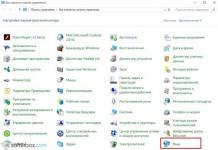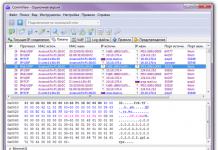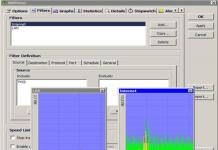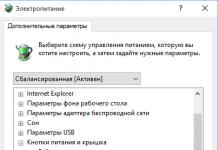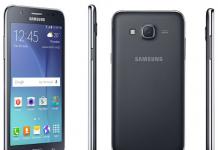Apple technology occupies a leading position around the world, but this does not guarantee the absence of problems with it. One of the most common questions among users is why the Internet does not work on the iPhone. Most often, the cause is incorrect settings, but there are also more complex reasons due to which there is no connection to the 3G, 4G or Wi-Fi network.
First of all, you need to find out whether the cellular company provides LTE or 4G connection service. For example, some corporate SIM cards are designed only for calls and SMS, and they will not be able to access the World Wide Web unless this is provided for in the tariff.
There are several main signs of failure:
- LTE, Wi-Fi or 3G does not function.
- Can't use iPhone instead of modem.
- There is a connection icon, but the pages in the browser do not load.
When the Internet does not work on your iPhone, you can try rebooting the device. Most often, after a restart, the connection is restored, which indicates that the network is not working correctly.
If the Internet is lost, you should pay attention to the icon in the upper right corner. When you are in a coverage area, the letters “E”, “H+” or “3G” will be displayed there. The absence of such icons indicates that the user is outside the coverage area, and he will have to go to the area where he can receive communication.

If the device has just been purchased, special settings will be required. They can be ordered from your mobile operator or entered manually if you know the parameters suitable for a specific iPhone model. But usually they come automatically the first time you connect to the base station.
Self-diagnosis
To diagnose yourself, take the test. The virtual assistant will identify the problem and tell you what to do.
Have you rebooted your phone?
Right! Not true!
We continue diagnostics >>
Have you checked the remaining traffic in the package?
Right! Not true!
If there is still traffic, click the “Continue diagnostics” button.
We continue diagnostics >>
Are LTE, 3G, E icons displayed next to the operator name?
Right! Not true!
If they are not there, most likely something has happened to the operator’s equipment or you are out of range. We recommend waiting a bit or moving at least 100 meters from this location.
If it doesn’t help, click the “Continue diagnostics” button.
We continue diagnostics >>
The network may be congested, wait 15 to 30 minutes.
Right! Not true!
If you have already waited, click the “Continue diagnostics” button.
We continue diagnostics >>
Have you tried updating or reflashing your device?
Right! Not true!
The new firmware fixes software glitches and allows you to establish communication.
If you have updated, click the “Continue diagnostics” button.
We continue diagnostics >>
Has the phone been dropped or repaired?
Right! Not true!
If dropped or repaired, the board responsible for data transmission may be damaged.
If it didn’t crash, click the “Continue diagnostics” button.
We continue diagnostics >>
We continue diagnostics >>
iPhone internet not working
It's time for repairs, the problem is clearly not in the software part, you can't fix it with your own hands.
Start again!
Checking the connection
The reasons why the iPhone does not connect to the Internet can be different:
- Invalid parameters.
- Software glitch.
- SIM card damage.
- Lack of coverage.
- Problems with the module.
- The router is broken (if the device does not see Wi-Fi).
All cellular operators provide the Mobile Internet service, but it can only be used if you have a positive balance or have available GB of traffic in the package. If this condition is not met, you will not be able to use the wireless network.

Rebooting the network
- Open the settings, go to “Cellular Data”, find the slider opposite “Transfer”.
- We turn off data transfer for 30 seconds, and then activate it again and try to use the browser.
If the above method does not help, you should use a more complex option that involves a complete data reset:
- Go to “Settings”, go to “Network”.
- Click on “Cellular Data” and select “Reset”.
- We call the direct line of our cellular communication company and order new parameters, indicating the specific model of our gadget.

Setting up a 3G and 4G connection
To set up a 3G or 4G connection, make sure you have a positive account balance, and then follow a few simple steps:
- Go to network settings, click on “Data transfer”.
- Make sure that the 3G function is active. In the APN, username and password lines, enter the appropriate data provided by the operator.
In some cases, resetting the settings and then re-entering them helps. If the problem remains after the update, you should look for another reason.

Setting up a Wi-Fi connection
If you cannot provide Internet access through your router, you can try rebooting it. Sometimes the problem lies in incorrect router settings, which are configured as follows:
- When the provider's cable is already connected to the router to the WAN port, press the power button and wait for the device to boot.
- Enter 192.168.0.1 or 192.168.1.1 in the address bar of the browser and press Enter, then enter your username and password. Most often these are “Admin” and “1234”. They must be changed in your personal account, otherwise an unauthorized person will be able to control the router as a result of hacking the access point.
- We request the data for the router from the provider. They are different for each model.
- We enter the received data, save it, change the password and login to enter the account.
After all the manipulations, you need to try to connect to Wi-Fi from your iPhone by activating the corresponding function in it.
It is recommended to try simply reconnecting to Wi-Fi if you already have the necessary settings and have not encountered any difficulties with the router before. To do this, select the appropriate connection icon and move it to the left to disconnect. To turn it on, just move the slider to the right.
If you plan to use your iPhone as a modem to access the web from another phone, PC or laptop, you should set up an access point:
- Click on the “Cellular” menu and go to “Data Transfer”.
- Click on “Modem Mode” and enter the APN provided by your telecom operator.
- Save everything and reboot the device.
To enable the function, just go back to the settings and drag the slider opposite “Modem mode” to the active state. How to connect to the access point from another device in the future:
- Turn on Wi-Fi.
- Find the name of the point, click on “Connect”.

The signal reception and transmission module is broken
The worst case scenario is a breakdown of the signal reception and transmission device. Each device has modules responsible for connecting to the Internet. If the electronic chips fail, you will not be able to use the wireless connection.
The main sign of a problem is the gray Wi-Fi icon. There may be several reasons:
- Moisture on the module.
- Gadget falling.
- Damage to contacts.
In any case, if you suspect a technical problem, you should seek a qualified technician. The cost of parts and labor on the Apple iPhone is not low, so it is best not to contact unverified specialists so as not to waste money.
Restart iPhone
Helps in 80% of cases! We just turn the phone off and on, the device re-registers on the network and the problem goes away. This is especially true for TELE2 and MTS.
Call to operator
If you have problems accessing the World Wide Web, you should call your operator's direct line. What numbers exist:
- MTS: 0890.
- Tele2: 611.
- Megafon: 8-800-550-05-00.
- Iota: 8-800-550-00-07.
- Beeline: 0611.
When calling a mobile operator, you need to have your passport information on hand, as a specialist may need it to check the status of your account. You also need to identify the problem - lack of network, and then you will be able to find out the possible reasons. If the situation is caused by a technical glitch, the connection icon will appear after a while.
Conclusion
All Apple phone owners use the Internet, so when problems with network connectivity occur, it poses a problem. The reason may lie either in incorrectly set parameters or in hardware failures, so before you begin troubleshooting, you need to identify all problems through self-diagnosis, or contact an authorized service.
Video
If the Internet does not work on your iPhone, you need to identify the cause of this problem and solve it.
First of all, you need to clarify whether your number is provided with Internet access. It happens, for example, that it is disabled on corporate SIM cards. In this case, you need to call the operator and order this service.
Pay attention to the top of the display - there should be an icon in the form of the letter E. It will tell you that the iPhone is currently within range of the Internet. If you don't see it, you may be out of network coverage. Try going out into an open space, or simply reboot your phone.

If in this case you cannot access the World Wide Web, try looking at your data transfer settings. To do this, go to the menu “Settings - General - Network - Cellular data network”. Here you will see the following three items: APN, Username.

See if the settings for your operator are entered correctly:
MTS
APN: internet.mts.ru
Username: mts
Password: mts
Beeline
APN: internet.beeline.ru
Username: beeline
Password: beeline
Megaphone:
APN: internet
Username: gdata
Password: gdata
If suddenly this does not help you, in the same menu, click “Reset settings”, and then re-enter the data to connect to the network. Check out.
Users often ask about how to turn off the Internet on iPhone. Most often, in such questions they mean mobile Internet (, 3G, 4G LTE), but it can also be Internet via Wi-Fi.
In any case, this is done very simply. In this material we will look at both methods of disabling the Internet. The material will be useful for most iPhone models, including iPhone 4, 4s, 5, 5s, 5se, 6, 6s and 7.
How to turn off mobile internet on iPhone
When people ask how to turn off the Internet on an iPhone, they most often mean mobile Internet (GPRS, 3G, 4G LTE). The need to turn off mobile Internet may arise for various reasons. For example, mobile Internet is turned off in order to save on mobile communications in roaming, where the Internet often costs some unreal money.
If you need to turn off mobile Internet, then open your iPhone Settings and go to the “Cellular” section. In modern versions of iOS, this settings section should be located almost at the very beginning, after the Airplane Mode, Wi-Fi and Bluetooth sections. In iOS 6 and older, you must first open the General section.
There are quite a lot of options available in the Cellular section. At the very top you will see three switches: “Cellular Data”, “Enable 3G” and “Data Roaming”. Let's take a closer look at these three switches.
- « Cellular data "- when you turn off this switch, you will completely turn off all mobile Internet on your iPhone. You can only access the Internet via Wi-Fi.
- « Enable 3G"- a switch that is responsible for turning on and off 3G Internet. If you disable 3G Internet, the mobile Internet will operate using 2G (EDGE) technology, and the speed will be no more than 474 Kbps.
- « data roaming " – a switch that is responsible for the operation of the mobile Internet in roaming. If you turn off data roaming, the mobile Internet will not work in roaming mode, while the Internet will work normally on your home network.

In addition, in the “Cellular” settings section, you can enable or disable mobile Internet for individual applications. To do this, scroll down the settings page. There will be a list of applications that use the Internet. In this case, next to each application the amount of data that it transferred will be indicated, and on the right there will be a switch with which you can disable mobile Internet for this application.

By studying the information about the amount of data transferred, you can easily identify the applications that consume the most traffic and disable them. This way you can start without turning off your mobile Internet at all.
How to turn off the Internet via Wi-Fi
If you need to turn off the Internet that works via a Wi-Fi wireless network, then this is even easier. First, open your iPhone Settings and go to the “Wi-Fi” section, which is located almost at the very top.


In principle, you can turn off the Internet via Wi-Fi without going into iPhone Settings. To do this, you just need to swipe from the bottom edge of the screen to open the “Control Center” and press the Wi-Fi button.

After this, the Wi-Fi button will turn dark. This will mean that Wi-Fi Internet is disabled.
If you don't know yet, how to set up internet on iPhone, then be sure to read these instructions. Of course, a lot depends on the mobile operator, which can automatically activate the Internet settings on the iPhone; in this case, just open the standard one, enter the address of any site and check the Internet. If the pages load in the browser, then everything is fine, say thank you to your operator and start surfing the web.
But what to do if the phone does not connect to the network on its own, the answer is to continue reading how to set up the Internet on an iPhone and prepare to enter the settings manually:


Let's go to Settings– Basic– Net– Cellular data network
Internet settings on iPhone with iOS 10
In the first example, Internet settings were shown using older versions of iOS as an example. In order to enable the Internet on an iPhone with more recent firmware (for example, iOS 10), do the following. If you don’t have a SIM card yet, then purchase a SIM card after first deciding on a more suitable tariff plan. Immediately take a brochure with the settings from the seller. .

Now go to the Settings application and select – Cellular – Data settings 
Next, select – Cellular data network, and register all APNs (and, if necessary, other sections). The example above shows the settings of the Tele2 operator; you need to enter the settings of your operator.
We make settings for the Internet, which you can find out from your cellular operator or search in the already existing list given in the archive below. The fields should be filled in small English letters, as in the examples given:
 MTS
MTS
APN: internet.mts.ru
Username: mts
Password: mts
Beeline
APN: internet.beeline.ru
Username: beeline
Password: beeline
Megaphone
APN: internet
Username: empty
Password: empty
Tele2
APN: internet.tele2.ru
Username: empty
Password: empty
You can find your operator's settings in
How to enable or disable mobile internet on iPhone

Enabling and disabling mobile Internet in iOS is done as follows: Settings – Cellular communications – Cellular data. To save traffic and battery power, turn off Cellular data when you are not using the Internet.
We considered how to set up Internet on iPhone using mobile GPRS Internet as an example. But there is another way to connect the Internet to the iPhone - since the phone is equipped with a Wi-Fi module, it is possible to use a Wi-Fi access point, which can be organized at home or use public access points. In large cities, wireless Internet access points are widely developed, so while sitting over a glass of beer in a pub, you can also surf the Internet, check your email or check the weather. To connect via a Wi-Fi wireless network, you need to go to Settings– WiFi and activate the marker, after searching, select one of the found networks.
The disadvantage of connecting via Wi-Fi is that the iPhone is tied to a specific access point; if you move a certain distance away from it, the connection is lost. Mobile GPRS Internet is more convenient in this regard; the Internet works within the cellular coverage area.
If you are interested in high-speed Internet on the Apple iPhone and you have already completed the steps above, then look at “” and speed up.
If you are the happy owner of a new iPhone, then you can’t wait to try out all its capabilities and, most importantly, find out how to turn the Internet on or off.
Now it’s hard to imagine your normal day without the Internet at all, one way or another we need it: for work, study, just entertainment.
In today's material, I will not delve into any complex details of setting up the Internet on your iPhone. I'll just cover the most basic aspects that will help you use your brand new iPhone.
How to connect/turn off the Internet on an iPhone
So, as you know, there are different ways to access the wonderful and unique world of the Internet. There are only two of them on the iPhone, just like everywhere else.
Before moving on to the instructions, I’ll tell you a little about the advantages if you use your iPhone to surf the Internet:
- always the best modems;
- support for the latest standards;
- ease of connection.
Now let's look at each method separately. I’ll describe everything in sufficient detail so that no further questions arise (I used the latest iOS 10.1.1).
The easiest and freest way to use the Internet on an iPhone has always been Wi-Fi. It can be found everywhere, because now you can find free Wi-Fi in almost any cafe.
Apple devices are always quite difficult to get to know, only then after a couple of weeks you realize that everything is quite logical and practical.
There are two ways to connect the Internet via Wi-Fi, let's start with first, when you want to select a network manually:
- let's go to Settings, go to point WiFi;
- activate it by moving the switch until it turns green;
- Now all available networks appear and you select the one you need.

If there is a lock, this means that the network is locked with a password. If it is missing, you can connect and start surfing the Internet.
Second way much simpler, but it is more suitable for the case when you have previously connected to any network. We just call Command centre and activate the Wi-Fi icon. 
To make this panel appear, just swipe your finger from bottom to top. We are done with this point and now you can move on to the mobile Internet.
In almost any country, if you use a mobile operator, then the Internet of different standards is almost always included. It depends on the coverage and most often it is 3G or 4G. 
On the iPhone, this setting changed constantly, but not critically. I’ll tell you how to connect or disconnect on the latest firmware and I think it will also be possible to navigate on older models.
The whole process will look something like this:
- let's go to Settings, click cellular;
- activate Cellular data.

If you want to change the standard, then in the same menu simply select Data Options and you will find everything there. You can switch from 3G to 4G and vice versa.


